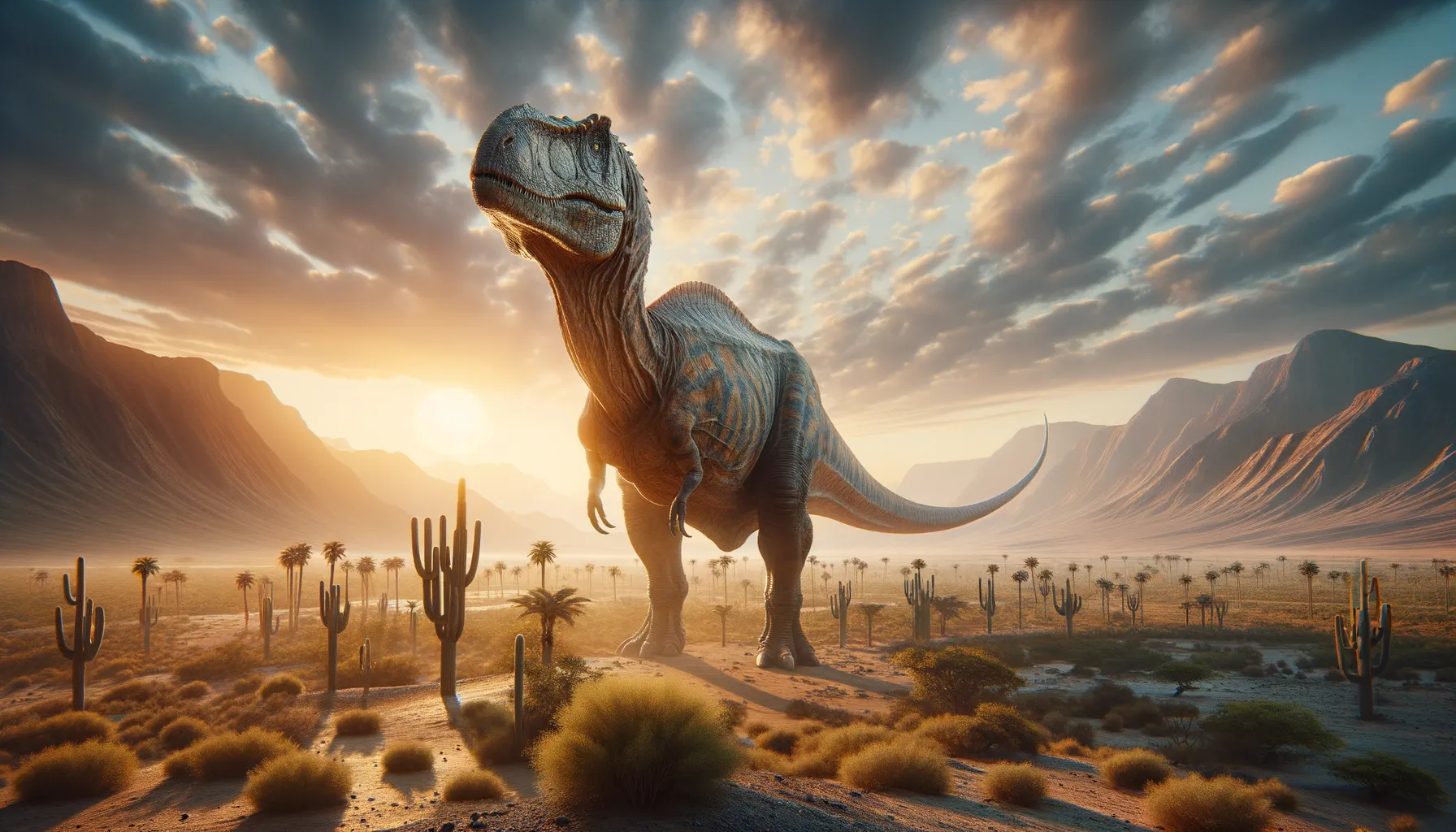
Jobaria
Discoveries from the sands of time.
Period
Jurassic
Length
About 60 feet long.
Height
Around 40 feet tall.
Weight
Approximately 22,000 pounds.
Jobaria was a large sauropod dinosaur that roamed the Earth during the Jurassic period, around 135 million years ago. With its long neck and massive body, it was well-adapted to graze on high vegetation. Jobaria's fossils were found in the Sahara Desert, providing insights into the diverse ecosystems of ancient Africa. Its discovery has helped paleontologists better understand the evolution and diversification of early sauropods.
Diet
Jobaria was an herbivore, feeding on a variety of plant matter. Its elongated neck allowed it to reach high foliage, including leaves and branches from towering trees.
Hunting
As a plant-eater, Jobaria did not hunt but foraged for its food. It likely traveled in groups to locate rich feeding grounds and avoid predators.
Environmental challenges
Jobaria faced environmental challenges such as fluctuating climates and limited water sources. Its large size helped it travel long distances in search of food and hydration. The changing environment would have required adaptability to different types of vegetation and habitats.
Speed
Jobaria was relatively slow, moving at a leisurely pace.
Lifespan
It likely lived for several decades.
First discovery
Jobaria fossils were first discovered in Niger in the Sahara Desert.
Fun Facts
- Jobaria was a dinosaur that lived about 135 million years ago during the Early Cretaceous period.
- It was discovered in the Sahara Desert in Niger, Africa, in the late 1990s by a team led by a paleontologist named Paul Sereno.
- Jobaria was a large sauropod dinosaur, meaning it was a long-necked, plant-eating giant.
- Despite its massive size, Jobaria was relatively primitive compared to other sauropods, with features similar to older dinosaur groups.
- Jobaria could grow up to 60 feet long, roughly the size of a school bus.
- Unlike some other dinosaurs, Jobaria's fossil remains were found relatively complete, making it easier for scientists to study.
- Jobaria likely roamed in a landscape that was much greener and wetter than today's Sahara Desert.
Growth and Development
Jobaria likely grew rapidly during its early years to avoid predation. Its massive size upon reaching adulthood provided protection and dominance over other animals. The dinosaur's development involved complex growth patterns to support its long neck and heavy body.
Habitat
Jobaria lived in what is now the Sahara Desert, which was lush and filled with abundant plant life during the Jurassic period. The area supported a diverse ecosystem, including various plant species and other large dinosaurs. Its habitat consisted of vast floodplains and river basins, providing ample resources for its survival.
Interaction with other species
Jobaria probably coexisted with other herbivorous and carnivorous dinosaurs. Its size and group behavior discouraged attacks from predators. Interactions with smaller species may have included competition for resources, although its dietary preferences minimized direct competition.
Natural lifespan
Jobaria's natural lifespan likely spanned several decades.
Reproduction
Jobaria likely laid eggs in nests constructed on the ground, similar to other sauropods. Parental care may have been minimal, with hatchlings growing rapidly to fend for themselves. Reproductive success depended on finding safe and suitable nesting sites.
Social behaviour
Jobaria is believed to have lived in herds, offering protection against predators. Group living facilitated migration in search of food and water. Social structures within the herd might have included dominance hierarchies based on size or age.
Fossil locations
Jobaria fossils have been primarily found in the desert regions of Niger in Africa. The location of its discovery indicates a widespread range across ancient floodplains. These fossils offer critical insight into the paleoenvironments of the early Jurassic Sahara.
